#Deputy High Commissioner
Explore tagged Tumblr posts
Text
India MSME Raghu Vamsi Group fully acquires UK PMC Group, boosts precision tech capabilities
By N. C. Bipindra Hyderabad (India): Indian precision manufacturing firm Raghu Vamsi Group, a tier 1 supplier to global aerospace majors such as Boeing Co. and GE Aviation, has fully acquired the PMC Group in the United Kingdom to strengthen its core capabilities and to expand to the oil and gas industry. The Hyderabad-based Raghu Vamsi Group also supplies hi-critical components,…
#Aerospace#ARCI#Boeing#Boeing Co.#British#Business#Chairman#Collins Aerospace#Components#Cytiva#Defence#Defense#Deputy High Commissioner#Dr L Rama Krishna#Dr SK Jha#Eaton#Exports#Gareth Wynn Owen#GE#GE Aviation#General Electric#Halliburton#Honeywell#Hyderabad#India#Indian#Innovation#Jayesh Ranjan#Managing Director#Manufacturing
0 notes
Text
Jharkhand High Court Questions Officials on Tribal Population Decline
Jharkhand High Court seeks detailed explanation on Bangladeshi infiltration claims Jharkhand High Court expresses concern over affidavits from six Santal districts regarding tribal population decline and alleged infiltration. JAMSHEDPUR – The Jharkhand High Court has raised questions about affidavits submitted by Deputy Commissioners and Superintendents of Police from six Santal districts. The…
#Aadhaar and Voter ID processing#राज्य#Bangladeshi infiltration claims#Chief Justice Arun Kumar Rai#Deputy Commissioners affidavits#Jharkhand demographic concerns#Jharkhand High Court hearing#Public Interest Litigation Daniel Danish#Santal districts investigation#state#Superintendents of Police reports#tribal population decline
0 notes
Text
डिप्टी कमिश्नर को चीफ जुडिशल मजिस्ट्रेट को धमकाना पड़ा भारी, हाई कोर्ट ने किया तलब
Jammu Kashmir News: जम्मू-कश्मीर हाई कोर्ट ने एक आईएएस अधिकारी को आपराधिक अवमानना मामले में हाजिर होने का आदेश दिया है। अधिकारी गांदरबल में डिप्टी कमिश्नर पर पर तैनात हैं। आईएएस अधिकारी श्यामबीर पर आरोप है कि उन्होंने चीफ जूडिशल मजिस्ट्रेट फयाज अहमद कुरैशी के आदेश के बाद उनसे बदला लेने की कोशिश की और निजी हमला किया गया। जज ने उनके खिलाफ मुआवजे के एक मामले में फैसला सुनाया था। कोर्ट ने उनकी सैलरी…
0 notes
Text
Started the day by reading this article from the NY times, and I'm frankly, disturbed.
Some highlights:
"For decades, farmers across America have been encouraged by the federal government to spread municipal sewage on millions of acres of farmland as fertilizer. It was rich in nutrients, and it helped keep the sludge out of landfills."
Which I knew, and I knew that there were concerns about contaminants from like, the medications people were on. But human waste is part of the nutrient cycle, and it always made sense to me that it should be throughly composted and returned to agricultural lands, and I assumed that people in general were taking the steps necessary to make it safe.
But here's what I didn't know:
"The 1972 Clean Water Act had required industrial plants to start sending their wastewater to treatment plants instead of releasing it into rivers and streams, which was a win for the environment but also produced vast new quantities of sludge that had to go somewhere."
Which, yay, no longer polluting bodies of water, but now that means we're applying industrial waste water to agricultural lands. And have been since 1972. Which leads to this situation, among many others, I'm sure:
"The sludge that allegedly contaminated the Colemans’ farm came from the City of Fort Worth water district, which treats sewage from more than 1.2 million people, city records show. Its facility also accepts effluent from industries including aerospace, defense, oil and gas, and auto manufacturing. Synagro takes the sludge and treats it (though not for PFAS, as it’s not required by law) then distributes it as fertilizer."
So here's what some states are doing:
"In Michigan, among the first states to investigate the chemicals in sludge fertilizer, officials shut down one farm where tests found particularly high concentrations in the soil and in cattle that grazed on the land. This year, the state prohibited the property from ever again being used for agriculture. Michigan hasn’t conducted widespread testing at other farms, partly out of concern for the economic effects on its agriculture industry.
In 2022, Maine banned the use of sewage sludge on agricultural fields. It was the first state to do so and is the only state to systematically test farms for the chemicals. Investigators have found contamination on at least 68 of the more than 100 farms checked so far, with some 1,000 sites still to be tested.
“Investigating PFAS is like opening Pandora’s box,” said Nancy McBrady, deputy commissioner of Maine’s Department of Agriculture."
This is fun:
"The E.P.A. is currently studying the risks posed by PFAS in sludge fertilizer (which the industry calls biosolids) to determine if new rules are necessary.
The agency continues to promote its use on cropland, though elsewhere it has started to take action. In April, it ordered utilities to slash PFAS levels in drinking water to near zero and designated two types of the chemical as hazardous substances that must be cleaned up by polluters. The agency now says there is no safe level of PFAS for humans...
It’s difficult to know how much fertilizer sludge is used nationwide, and E.P.A. data is incomplete. The fertilizer industry says more than 2 million dry tons were used on 4.6 million acres of farmland in 2018. And it estimates that farmers have obtained permits to use sewage sludge on nearly 70 million acres, or about a fifth of all U.S. agricultural land."
There's more, but I wanted to condense it at least a little bit. I am glad we're raising awareness, and I'm glad we're starting to regular the amount in our drinking water, and I hope that we'll find a way to actually deal with PFAS. I am so frustrated that people are exposed in the first place, and in nigh inescapable ways.
Also, to all those people who were like, oh, organic isn't at all healthier for consumers? Guess what the organic standards don't allow to be applied?
140 notes
·
View notes
Text
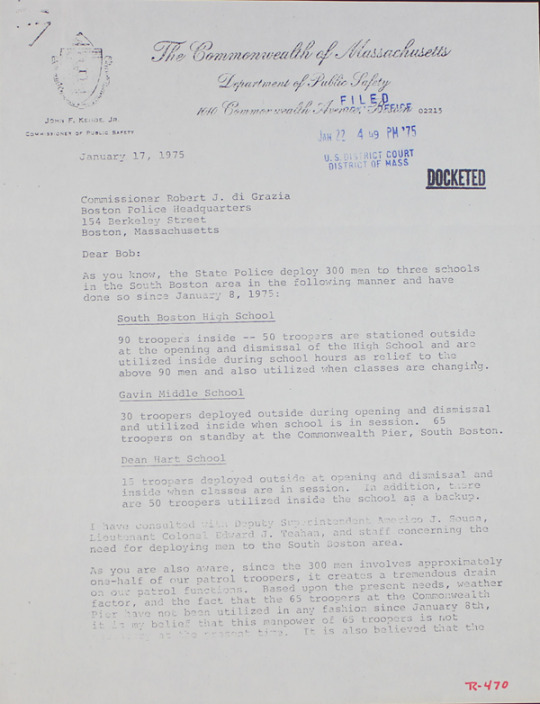
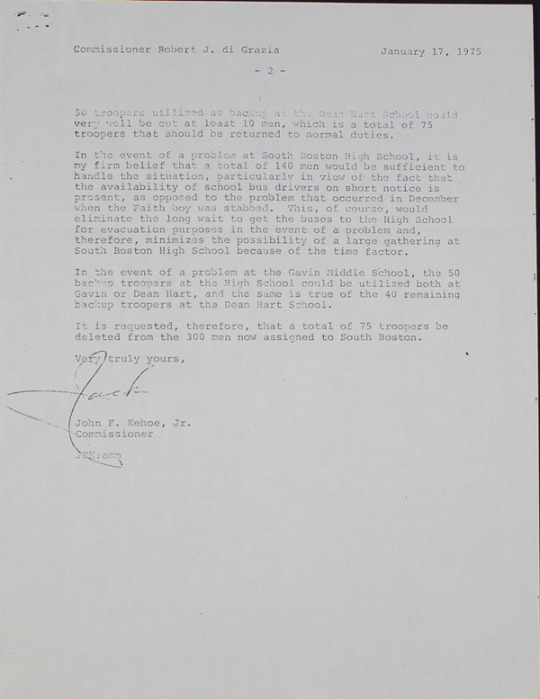
Letter from Boston Commissioner of Public Safety John Kehoe to Boston Police Commissioner Robert di Grazia
Record Group 21: Records of District Courts of the United StatesSeries: Tallulah Morgan et al v. James W. Hennigan et al Civil Action Case File # 72-0911
The Commonwealth of Massachusetts
Department of Public Safety
1010 Commonwealth Avenue, Boston
January 17, 1975
Commissioner Robert J. di Grazia
Boston Police Headquarters
154 Berkeley Street
Boston, Massachusetts
Dear Bob:
As you know, the State Police deploy 300 men to three schools in the South Boston area in the following manner and have done so since January 8, 1975:
South Boston High School: 90 troopers inside -- 50 troopers are stationed outside at the opening and dismissal of the High School and are utilized inside during school hours as relief to the above 90 men and also utilized when classes are changing.
Gavin Middle School: 30 troopers deployed outside during opening and dismissal and utilized inside when school is in session. 65 troopers on standby at the Commonwealth Pier, South Boston.
Dean Hart School: 15 troopers deployed outside at opening and dismissal and inside when classes are in session. In addition, there are 50 troopers utilized inside the school as a backup.
I have consulted with Deputy Superintendent America J. Sousa, Lieutenant Colonel Edward J. Teahan, and staff concerning the need for deploying men to the South Boston area.
As you are also aware, since the 300 men involves approximately one-half of our patrol troopers, it creates a tremendous drain on our patrol functions. Based upon the present needs, weather factor, and the fact that the 65 troopers at the Commonwealth Pier have not been utilized in any fashion since January 8th, it is my belief that this manpower of 65 troopers is not (illegible) at the present time. It is also believed that the Commissioner Robert J. di Grazia January 17, 1975
- 2 -
50 troopers utilized as backup at the Dean Hart School could very well be cut at least 10 men, which is a total of 75 troopers that should be returned to normal duties.
In the event of a problem at South Boston High School, it is my firm belief that a total of 140 men would be sufficient to handle the situation, particularly in view of the fact that the availability of school bus drivers on short notice is present, as opposed to the problem that occurred in December when the Faith boy was stabbed. This, of course, would eliminate the long wait to get the buses to the High School for evacuation purposes in the event of a problem and, therefore, minimizes the possibility of a large gathering at South Boston High School because of the time factor.
In the event of a problem at the Gavin Middle School, the 50 backup troopers at the High School could be utilized both at Gavin or Dean Hart, and the same is true of the 40 remaining backup troopers at the Dean Hart School.
It is requested, therefore, that a total of 75 troopers be deleted from the 300 men now assigned to South Boston.
Very truly yours,
Jack
John F. Kehoe, Jr.
Commissioner
JFK:amm
35 notes
·
View notes
Text
Canada and India each expelled six diplomats Monday in tit-for-tat moves as part of an escalating dispute over the June 2023 assassination of a Sikh activist in Canada. Foreign Minister Mélanie Joly said that Canada was expelling six Indian diplomats, including the high commissioner, after police uncovered evidence of a targeted campaign against Canadian citizens by agents of the Indian government. Shortly afterward, the Indian foreign ministry said that it was expelling six Canadian diplomats, including the acting high commissioner and the deputy high commissioner. It said in a statement that the diplomats were told to leave India by the end of Saturday. The ministry had said earlier Monday that India was withdrawing its diplomats, after rejecting Canada’s diplomatic communication on Sunday that said the Indian ambassador was a “person of interest” in the assassination. A senior Canadian official said that Canada expelled the Indian diplomats first before they withdrew. Both officials spoke on condition of anonymity because they weren’t authorized to speak publicly on the matter.
91 notes
·
View notes
Text

THE ROYAL CHRONICLES : First Diplomatic Engagement .* :☆゚。 ・
On 25 February 2011, Catherine joined Prince William for a somber engagement as they visited New Zealand House in London to pay their respects to all those who lost their lives in the Christchurch earthquake.
During the visit they spoke with High Commissioner Derek Leask and his deputies, and signed the book of condolences.


Catherine signed the book of condolences with her maiden name on the same page as William.

#british royals#british royal family#royalty#royals#royal#kate middleton#british royalty#brf#catherine middleton#duchess of cambridge#prince of wales#the prince of wales#prince william#william prince of wales#catherine princess of wales#princess of wales#the princess of wales#princess kate#princess catherine#prince and princess of wales#the prince and princess of wales#25022011#NewZealandHouse11#will windsor#cat middleton#royaltyedit#royalty edit#trc : new zealand house 11#the royal chronicles.#trc.
130 notes
·
View notes
Text
Brazilian trans politician and other 100 parliamentarians accuse the US of transphobia
The complaint presented to the UN cites a decree that doesn’t recognize the gender identity of trans people in the US

On Tuesday (29), Brazilian Federal Deputy Erika Hilton (Socialism and Liberty Party) and around 100 other parliamentarians and 50 civil organizations denounced to the United Nations (UN) High Commissioner for Human Rights Donald Trump’s government for transphobia.
The complaint cites a decree issued by the Republican president shortly after taking office in January of this year, which does not recognize the gender identity of trans people in the United States. The measure restricts the category “sex” to biological classification and does not include the aspect of gender identity in federal documents.
“As of today, the US government policy is that there are only two genders: male and female,” Trump said in his inauguration speech on Capitol Hill on January 20. The decree aims to “restore biological truth” and is also part of the principle the president defends, which says that “federal funds should not be used to promote gender ideology.”
At the beginning of April, the US ignored the Brazilian documents and registered Hilton as male when issuing a diplomatic visa for an academic conference. The parliamentarian was going to the country to take part in the lecture “Diversity and Democracy”, alongside other Brazilian authorities at the Brazil Conference, organized by the Brazilian community at Harvard and the Massachusetts Institute of Technology (MIT). After the incident, Erika Hilton canceled her trip.
Continue reading.
#brazil#politics#united states#LGBT#geopolitics#united nations#erika hilton#brazilian politics#us politics#image description in alt#mod nise da silveira
20 notes
·
View notes
Text

THURSDAY HERO: Victor Bodson
Victor Bodson was a Luxembourger politician who created an escape route for German Jews fleeing Hitler and saved over 100 lives, at great risk to his own.
Born in 1902 in one of the smallest countries in Europe, Victor was equally comfortable on the athletic field and in the halls of power. An avid swimmer, boxer and motorcycle racer in his youth, Victor became a successful lawyer and political activist. He became a member of his small country’s Board of Deputies in 1934, and the next year was elected to a council seat in Luxembourg City.
Victor lived on the Sauer River, which forms the border between Luxembourg and Germany. As Hitler and the Nazis rose to power in the 1930’s, it became increasingly difficult for Jews to leave Germany. Desperate Jews began crossing the treacherous Sauer River, hoping to find safety in the small kingdom. Fortunately for them, Victor Bodson was waiting on the other side to ferry them to safety. An expert driver and mechanic, Victor equipped his vehicle with a specially-designed apparatus to completely hide the passengers. When the Jewish refugees exited the river, they followed secret directions to Victor’s house, where he provided them with dry clothing and other basic needs. Then he ferried them to safe houses that he’d arranged and prepared beforehand.
Victor continued his heroic lifesaving efforts for seven years, from 1933 to 1940. He did this despite knowing that if the Nazis found out, he could be executed without trial. He took many risks during those seven years, never knowing whom he could trust when looking for people to hide Jews, never knowing if the Nazis were on his trail, and traveling through treacherous forests during bitter winter months. The exact numbers are unknown, and Victor did not talk about his brave actions, but historians estimate that he saved approximately 100 people – not to mention all those peoples’ descendants.
In May 1940, Germany invaded Luxembourg and Victor was unable to continue helping Jewish refugees. Most of the Luxembourg government fled in a motorcade, but Victor stayed behind to provide help amid the chaos. Later, using knowledge of backroads gained during his time as a motorcyclist, he escaped to France, then Portugal, and finally to Montreal, Canada where he became part of the Luxembourg government in exile. For the remainder of the war, Victor continued to help Jews and other refugees by providing them with entry visas to Canada and the United States. In 1942 the Gestapo put him on their most wanted list, but they were unable to do anything to him because he was so far away.
After the war, Victor returned to his homeland and served as a high level government commissioner, first in the justice department and later as the transportation minister. In 1971, Victor was deeply touched to be recognized as Righteous Among the Nations by Israeli Holocaust Memorial Yad Vashem. He wrote a beautiful letter of gratitude for the honor, humbly downplaying his own actions and saying that he was simply fulfilling his human duty to help others.
Victor Bodson died in 1984. He remains a source of pride to his countrymen who named the beautiful Victor Bodson Bridge after him.
For saving one hundred lives over seven years, we honor Victor Bodson as this week’s Thursday Hero.
42 notes
·
View notes
Text
Excerpt from this press release from the Department of the Interior:
The Department of the Interior today announced a nearly $82 million investment from President Biden’s Investing in America agenda to bring clean, safe drinking water to Tribal communities in the West. The investment will fund 23 projects through a new program established through the Inflation Reduction Act—the largest climate investment ever.
Bureau of Reclamation Deputy Commissioner David Palumbo and Deputy Assistant Secretary for Water and Science Gary Gold made the announcement during a visit to San Carlos Apache Tribe in eastern Arizona, which is receiving $7.3 million to plan, design and obtain approvals and permits for a new raw water delivery and domestic drinking water treatment facilities for the San Carolos Regional Water System. The system serves the central portion of the reservation. Much of the population of the tribe resides in this area without access to safe and reliable drinking water. The area is prone to frequent water curtailments or shutdowns due to poor water quality and system mechanical failures, which often occur in the hot summer months.
President Biden's Investing in America agenda is deploying record investments to provide affordable high-speed internet, safer roads and bridges, modern wastewater and sanitations systems, clean drinking water, reliable and affordable electricity, and good paying jobs in every Tribal community.
The Inflation Reduction Act includes $550 million for domestic water supply projects in historically disadvantaged communities. In April, Reclamation made $320 million available through Fiscal Year 2031 to provide up to 100% of the cost for planning, design and construction of domestic water supply projects to support disadvantaged communities or households lacking access to reliable domestic water supplies. Reclamation did significant outreach to Tribes in the 17 western states to engage them throughout this funding opportunity.
Twenty-one projects through today’s announcement were selected to receive funding for planning and design and two were selected to receive funding for construction. View a complete list of projects on Reclamation’s website.
This funding is also advancing President Biden’s Justice40 Initiative, which aims to ensure that 40 percent of the overall benefits of certain climate, clean energy, and other federal investments flow to disadvantaged communities marginalized by underinvestment and overburdened by pollution.
20 notes
·
View notes
Text
The Catholic Church in Hungary has been engulfed by a series of high-profile sex scandals and child abuse investigations. The situation isn’t just a crisis for the church, but also a challenge for Viktor Orban’s Christian-nationalist government.
“Perhaps we should not refer to these merely as ‘scandalous cases’, but rather as the painful, inhumane, traumatizing injuries suffered by minors, which go far beyond ‘scandalous news’,” read a statement on December 4 by the editors of the independent Hungarian religious affairs magazine Szemlelek, reflecting on a crisis that has recently engulfed Hungary’s Catholic Church.
Since September, a series of scandals relating to sexual misconduct, pedophilia and cover-up in the Catholic church has wrecked the public reputation of five high-profile clerics and occasioned the suspension of a rising, but as-yet unconfirmed, number of their colleagues. Some see echoes of the crisis in the US Catholic church sparked by the 2002 Boston Globe ‘Spotlight’ investigation into child abuse in the city’s archdiocese – a story (and later movie) that plunged American Catholicism into a crisis from which it’s still recovering.
The close government ties of the priests implicated heighten concerns about overlaps between political power, religious networks and child sexual abuse in Hungary. These concerns were first raised earlier this year in February, following the exposure of a successful intercession by Reformed Church bishop (and former Fidesz cabinet minister) Zoltan Balog with then-president Katalin Novak, a fellow Calvinist, to pardon a church member convicted as a pedophile accomplice. News of the pardon led to Novak’s resignation.
Attention is now turning away from the Reformed community and towards the Catholic Church.
From local to national
In early September, the storm started rumbling with the public disgrace of Father Gergo Bese, a priest of the Kalocsa-Kecskemet archdiocese and a prominent social media influencer identified with the governing Fidesz party via its satellite KDNP (Christian Democratic Peoples’ Party). In 2022, Bese conducted a ‘house blessing’ of Prime Minister Viktor Orban’s office in the former Carmelite monastery beside Buda Castle.
On September 6, Hungarian outlet Valasz Online revealed that Father Bese, a vocal supporter of Fidesz’s anti-LGBTQ+ agenda, had been living a double life as a gay porn movie actor. He was also (against church law) receiving a stipend from the KDNP for communications work without permission from his bishop. He is now under disciplinary suspension.
While Father Bese’s activities involved only consenting adults, their discovery, however, prompted revelations about other forms of misconduct by Kalocsa priests, including those involving minors. Two clerics – Gabor Ronaszeki and Robert Hathazi – both with strong ties to Hungary’s ruling parties, are now being prosecuted by secular authorities for alleged child molestation.
In 2023, Ronaszeki underwent a church disciplinary process during which he admitted the offences, and was removed from the priesthood. He’s understood to have offered money and gifts in exchange for sex to underage boys attending his Religious Education group over a three-year period.
Ronaszeki is the brother-in-law of former Fidesz MP and ministerial commissioner Monika Ronaszekine Keresztes, as well as being an associate of the KDNP leader Zsolt Semjen, who is currently serving as the deputy prime minister and minister for church affairs in the Orban government.
Hungarian media reported that Semjen had been a personal guest at Ronaszeki’s remote “recreational farm” near the small town of Janoshalma in Southern Hungary. Responding to the reports, Semjen claimed that “to the best of my recollection” he has not “visited the place in question”.
Handing matters over swiftly to police and prosecutors reflects improvements in practice following recent reforms across the Catholic world. Even so, the scandal has continued to grow numerically and geographically.
In a November 15 interview with Valasz Online, the archbishop of Kalocsa-Kecskemet, Balazs Babel, said public awareness of the two court cases had led to more complainants bringing allegations against other clerics.
“In recent months, the Archbishop’s Office has received many more reports than before,” he admitted, adding that several other Kalocsa priests have now been suspended pending investigation.
Major Pajor problem
The issue has morphed from a diocesan scandal into a national crisis. That’s partly because the outcry about Kalocsa was heard from early on in the national media, and partly because first central church institutions and then other dioceses became implicated in related misconduct stories.
First came the resignation on October 25 of the national Bishops’ Conference Secretary Father Tamas Toth, amid allegations of serious impropriety in mishandling communications relating to Kalocsa.
And then on December 5 the scandal reached the archdiocese of Esztergom-Budapest, led by Hungary’s primate, Cardinal Peter Erdo.
On that day, news broke of canonical and police investigations into Budapest priest Father Andras Pajor, a prominent face of Fidesz’s ‘political Christianity’. In 2023, Father Pajor received Hungary’s Knight’s Cross of the Order of Merit from Deputy Prime Minister Semjen for his “role in youth education”.
Father Pajor has repeatedly urged Christians to vote for Orban. He has also, latterly, become notable as a spreader of Russian propaganda, claiming in a YouTube video about the Ukraine war that, since 2022, some 35,000 Russian children had been kidnapped “for pedophiles in the West”.
Former altar boys from his parish, speaking anonymously to Valasz Online, tell a rather different story, however. They claim Father Pajor himself frequently made them strip naked, inspected their genitals intimately with his hands, and gave them full body massages.
Anticipating the next day’s announcement concerning Father Pajor, on December 4 the Bishops’ Conference finally acknowledged the pedophilia issue as a national problem in a statement: “The scandalous news concerning our Church in recent months has caused many to feel uneasy and disappointed… for sins committed, we must pray, fast and make atonement.”
The text continued: “The Catholic Church stands with the victims and communities affected. We pray for them and support their healing.”
Political reverberations
In a letter to fellow bishops obtained by the independent news outlet Telex, Archbishop Babel observed that the impact of the successive scandals was greater “because they are interwoven with politics”.
The political dimension magnifies the spotlight on the church, but the connection of religion and pedophilia is a huge challenge for Fidesz – a party that portrays itself at home and abroad as a protector of family values.
The party’s domestic alliance with historic churches long predates its international communication about Hungary as a bulwark of Christian civilisation against Muslim migration and rising woke-secularism.
Churches have vigorously supported government messaging regarding the supposed dangers that, Fidesz alleges, the LGBTQ+ community poses to children, especially ahead of 2022’s ‘child protection’ referendum, which was timed to boost turnout at that year’s general election. Around 75 per cent of Hungary’s state-funded children’s homes are run by churches.
“Orban’s government constantly seeks endorsement from the churches for its Christian credentials,” religious affairs commentator Janos Reichert tells BIRN. This is because, Reichert continues, there are three overlapping themes closely connected in the minds of many Hungarians: “Hungarian nationalism, anti-Communism and Christianity”.
These three motifs organically support each other such that, Reichert says, “criticism of any one of them cannot be tolerated by Fidesz for fear of danger to the other two”.
Thus, anyone who criticises even one of them is “attacking the ideological basis of the regime”, he adds.
Reichert’s take is shared by political journalist Balazs Gulyas. The government’s flagging support amid economic turbulence and the rise of opposition challenger Peter Magyar means that, in his view, Fidesz is paradoxically more, not less likely to double down reflexively on its traditional talking points, including political Christianity.
“Hungary’s governing parties are grappling with a sharp decline in popularity, making it politically expedient for them to cling to their (overstated) role as the primary political patrons of the churches,” Gulyas tells BIRN. “I find it highly unlikely that they’d abandon the program of political Christianity.”
Such views seem to be borne out by the government’s responses to the crisis to date. Far from distancing itself from the churches, Fidesz has rushed to their defence.
In November, the left-wing opposition party DK proposed a parliamentary motion calling for Hungary to follow the example of Ireland and Australia in establishing an independent enquiry into child sexual abuse in the church. The government used its parliamentary super-majority to defeat the proposal.
And addressing parliament’s justice committee on November 14, Deputy Prime Minister Semjen, speaking in his capacity as minister for church affairs, dismissed suggestions that the situation in the churches represented a particular concern. “The number of church cases is a hundredth of the number of secular cases, there is no reason to single out the church world,” he declared.
15 notes
·
View notes
Text
René Amuan Santiago Tí remembers how, armed only with wooden spears, he and his companions disarmed a group of policemen as they drew their pistols, after they caught the officers escorting a barge full of illegal mining machinery. The guns went in the river.
Disarming the police officers was a risky move, but the members of the Charip, as the Indigenous guards of the Wampis Nation people are known, were confident that something was amiss.
Charip means lightning, and for the territorial defenders it symbolises the way they strike against invaders of their land along the Santiago River, in the far north of Peru on its Amazonian frontier with Ecuador.
The three police officers, who were detained alongside Ecuadorian and Peruvian nationals in the incident in April 2024, were moonlighting as hired guns for illegal goldminers and were hundreds of miles from where they were based in Piura, a coastal region of Peru.
The Wampis refused to release them until the government sent a high-level commission to address the problem of wildcat goldminers plundering and polluting their land.
A few days later, a military helicopter carrying the deputy interior minister and the high commissioner against illegal mining touched down in Villa Gonzalo. Thousands of Wampis people had assembled in the village, its Charip warriors adorned in war paint. They demanded respect for their territory and action to expel the invaders.
Nearly a year later, the Charip guardians – rather than the state – have exerted control. They use stop-and-search at a checkpoint to thin out the number of mining dredgers upriver, says Santiago Tí, leader of the band of less than a dozen men who work day and night.
“We welcome visitors but will not allow people who come to do us harm,” he says. “If they come to extract gold or destroy our forest, then we are fierce. We are very protective of our forest.”
The Wampis people face a conundrum. They are the only Indigenous people in Peru to have created their own territorial government – an act of self-determination and a response to the state’s absence in the northern reaches of Condorcanqui province in the Amazonas region.
But while they have shown resilience and organisation in confronting illegal miners, they do not have the firepower to take on the criminal gangs behind the gold rush that is reaching ever deeper into Amazon border regions, as the international gold price surpasses $3,000 (£2,300) an ounce this month, a record high.
“We are seeing how different criminal economies are expanding their presence, territorial control and political influence in the Amazon,” says Raphael Hoetmer, western Amazon programme director at the environmental group Amazon Watch. “Organised crime is becoming a major threat to the global climate.”
The autonomous territorial government of the Wampis Nation was formed in 2017, a 13,000 sq km (5,000 sq mile) stretch of mountain and lowland rainforest across the Santiago and Morona river basins, with a population of about 15,000 people in 22 titled communities.
The nation was created under international laws that recognise the self-determination of Indigenous people, such as the Indigenous and Tribal Peoples Convention, which was enshrined in the Peruvian constitution.
River dredging for gold is prohibited in the territory, and the autonomous government has made clear its intention to seize and destroy any equipment found.
What the Charip members lack in resources, they make up for in spirit. From a wooden shed that resembles a birdwatching hide perched on the brow of a riverbank, they look out across the river. All vessels that pass – from canoes powered by puttering peque-peque motors to larger chalupas that carry passengers and goods – must stop to be inspected.
Each wears a donated bulletproof vest and carries a blackened nanki, a spear carved from tough chonta palm. One of them, Edgar Tí, is cordial as he inspects a boat that pulls up on the riverbank, registers the details on a clipboard, questions the driver and passengers, and checks for mining supplies such as plastic tubing, motor pumps or jerrycans of diesel.
Miners caught for the first time get off with a warning, but the Charip mete out Indigenous justice to reoffenders. They lash them with an ishanga, a type of Amazon nettle, or tie them for five minutes to a tangarana tree. This tree has a symbiotic relationship with aggressive fire ants, which attack any perceived threat to their home.
Santiago Tí says the nettles and ant bites, despite being painful, are used in traditional medicine to treat aches and pains, including arthritis. But chastised miners do not appreciate the punishment and several of the young men say they have received threats on instant messaging apps.
Older leaders, such as Alfonso Awananch Flores, the nation’s director of environment and territorial control, have been threatened, too. He says he avoids travelling to the larger towns since he was briefly abducted and interrogated.
“Without territory, we are not Wampis people,” says Flores, 45. That is why, he argues, they have strict management of their territorial autonomy and “cannot allow an activity that destroys our land, pollutes our river and poisons our fish”.
“We don’t need the state’s permission to declare our self-autonomy; we have been here for 7,000 years,” he says.
“We don’t need their recognition either. We have the right to become a territorial government.”
But they do need the armed forces to crack down on the dredgers, Flores admits, as the division between those opposed to mining and those who favour the illegal activity has split communities.
“We don’t want to create conflicts between families. That’s why we want the state to enforce the law,” he says.
Teófilo Kukush, the pamuk, or leader of the Wampis Nation, says miners are using children as “human shields” on dredgers to prevent the police and navy destroying the craft. “They pay the parents in communities to use their children,” says Kukush, who wears a red and yellow macaw feather crown signalling his status.
He is calling on the government to declare a state of emergency in the Santiago River and expel the miners.
“They make us fight among ourselves, and the mining groups have hired assassins who threaten us,” he says.
#excerpts#goes on to talk about other communities that feel they have no choice but to work with the miners#peru#indigenous rights#environment#illegal mining#south america
6 notes
·
View notes
Text
New Sub-Divisional Civil Court Inaugurated in Chakradharpur
Chief Justice Inaugurates Chakradharpur Sub-Divisional Court A new sub-divisional court in Chakradharpur was inaugurated with traditional rituals and mantras. CHAKRADHARPUR – The Chakradharpur Sub-Divisional Court was inaugurated on Sunday amidst traditional rituals and chanting of mantras. Priests Gautam Nanda and Mahadev Nanda conducted the ceremonies. The building was officially opened by…
#राज्य#Chakradharpur court#Chief Justice Vidyut Ranjan Sarangi#Deputy Commissioner#District and Sessions Judge Vishwanath Shukla#Family Court Judge#Jharkhand High Court#judicial infrastructure#new court inauguration#state#Superintendent of Police#West Singhbhum news
0 notes
Text
WhatMatters
Your guide to California policy and politics

By Lynn La
April 23, 2025
Presented by TURN - The Utility Reform Network, Californians for Energy Independence, Dairy Cares and Californians for a Connected Future, a Project of USTelecom
Good morning, California.
Californians continue to suffer toxic gas effects while officials ‘investigate’

A container of hazardous gas, likely methyl bromide, is seen at the outer berths at the Port of Los Angeles in San Pedro on April 8, 2025. Photo by Joel Angel Juarez for CalMatters
A CalMatters investigation of facilities emitting methyl bromide in Los Angeles County has found that local air quality officials won’t be monitoring the air or taking any immediate steps to protect people in nearby homes and schools.
As Alejandra Reyes-Velarde explains, methyl bromide is a highly toxic gas used to kill pests on imported produce. California health officials have classified the chemical as a reproductive toxicant, which means it can harm developing babies in the womb. High levels of short-term exposure can cause headaches and nausea, while exposure lasting a year or more can lead to neurological effects such as learning and memory difficulties.
The South Coast Air Quality Management District has reported that five fumigation facilities in Long Beach, Compton and the L.A. neighborhood of San Pedro may pose a health risk based on a preliminary review.
In response to a public outcry in Long Beach, the county’s agricultural commissioner, which issues permits to the fumigation companies, required new permit conditions that aim to reduce emissions from the two Long Beach plants.
But permits obtained by CalMatters for three facilities in Compton and San Pedro show that they use much larger volumes of methyl bromide than the Long Beach facilities — yet their permit conditions remain unchanged.
In a letter to regulatory agencies, Democratic U.S. Reps. Nanette Barragán, Maxine Waters and Robert Garcia called for monitors to be installed near all L.A. County fumigation facilities, health assessments for affected communities and the public disclosure of inspection records.
But the South Coast air district does not plan to install air monitors or hold meetings with residents to notify them of potential risks. It is, however, screening facilities to determine whether a full analysis of their health risks is necessary. But even if that analysis is greenlit, the agency said companies would only be required to reduce their emissions if they emit the chemical at concentrations three times higher than the amount deemed a health risk by the state.
Sarah Rees, South Coast’s deputy executive office for planning, rule development and implementation: “We don't want to go out and unnecessarily concern folks if there isn’t (a health concern), but we are actively investigating this right now.”
Edvin Hernandez, a father whose son attends an elementary school near the Compton facility, told CalMatters there appears to be “no interest from the government to protect our health.”
“We’re surviving by the hand of God,” he said.
Read more here.
Gifts are matched dollar-for-dollar in our CalMatters Spring Member Drive. We’re here to connect the dots, uncover what others won’t and explain how state and federal decisions directly impact your life — from housing and education to climate and the economy. Support our independent, trusted journalism, please give now.
Don’t miss this powerhouse panel: California Secretary of Business, Consumer Services and Housing Agency Tomiquia Moss, L.A. County Supervisor Holly J. Mitchell and Riverside Mayor Patricia Lock Dawson join CalMatters’ Marisa Kendall on stage Thursday to dig into what’s working — and what’s failing — when it comes to addressing homelessness and affordable housing. Join us in Sacramento or tune in online. Register now.
Focus on Inland Empire: Each Wednesday, CalMatters Inland Empire reporter Deborah Brennan surveys the big stories from that part of California. Read her newsletter and sign up here to receive it.
Other Stories You Should Know
First-of-its-kind program struggles to survive

A man experiencing homelessness walks by tents in Skid Row in Los Angeles on July 5, 2024. Photo by Etienne Laurent, Reuters
As California struggles to find stable housing for its 187,000 homeless residents, it must also contend with training and employing the people it needs to provide front-line homelessness services, write CalMatters’ Marisa Kendall and Adam Echelman.
Jobs that require face-to-face interaction with unhoused people — such as doing outreach in encampments, working at homeless shelters and being case managers — struggle to recruit and retain staff.
To meet the demands of L.A. County’s homeless population, Santa Monica College began a program last year to train prospective homeless service workers. A state fund provided the program with about $750,000, but once the money runs out, it’s unclear what will happen to the program. Gov. Gavin Newsom’s proposed state budget in January did not include any money for the fund.
Compounding the situation is the fact that the L.A. Homeless Services Authority — the agency that funds the college’s training program — is experiencing its own turmoil. After a scathing audit, the L.A. County Board of Supervisors voted earlier this month to pull its money out of the agency. The city is also considering doing the same.
Read more here.
On the topic of homelessness: Encampment sweeps in San Diego have become more frequent since the city reduced its warning notice from 72 hours to 24. Marisa and CalMatters video strategy director Robert Meeks have a video segment on how these sweeps displace unhoused Californians as part of our partnership with PBS SoCal. Watch it here.
SoCalMatters airs at 5:58 p.m. weekdays on PBS SoCal.
CA launches education and workforce database

Students at Point Loma High School in San Diego on May 3, 2024. Photo by Adriana Heldiz, CalMatters
Though debuting months behind schedule, a new statewide education data system to track student progress officially launched Tuesday, reports CalMatters’ Adam Echelman.
Championed by Gov. Newsom, the Cradle to Career Data System gathers data from roughly 3.5 million California public high school graduates and discloses where students enrolled in college; what kinds of degrees they earned; and the wages they earned after receiving a college diploma or certificate.
Similar tools have been developed by the state in years past, but the new database is more widely accessible to the public and collects data from more schools and state agencies.
In its current form, the dashboards reveal just a small segment of the state’s education and workforce data. Officials say they will roll out updates to the database, though no specific timelines were given.
For instance, information about students who attended private or out-of-state colleges will be integrated, as well as students who didn’t graduate high school. The state has also pledged to release other data as part of the Cradle to Career Data System, such as information about early childhood education and teachers’ training and retention.
Read more here.
And lastly: Fewer new CA students enrolled at UCs?

A student sits near the Leo and Dottie Kolligian Library at UC Merced on March 27, 2025. Photo by Larry Valenzuela, CalMatters/CatchLight Local
At a hearing Tuesday, officials at the University of California gave the strongest indication yet that the budget cuts state lawmakers are proposing may limit the ability of new students to enter California’s public universities. Find out more from CalMatters’ Mikhail Zinshteyn.
California Voices
CalMatters columnist Dan Walters: Given its record of overpromising on major projects, it’s not surprising that California’s goal to convert to carbon-neutral cars and trucks is already falling behind.
CalMatters contributor Loretta Lynch: The California Public Utilities Commission has been neglecting its responsibility to spend customer money wisely — repeatedly acquiescing to utility companies’ requests instead.
Other things worth your time:
Some stories may require a subscription to read.
Newsom says Democrats need to stop looking for a savior on a ‘white horse’ // NBC News
CA state Sen. Alvarado-Gil pulls mountain lion hazing bill after charged hearing // The Sacramento Bee
Why is a new office building for CA lawmakers costing as much as an NFL stadium? // KCRA
CA businesses are feeling the burn from Trump’s tariffs and trade war with China // San Francisco Chronicle
DOGE layoffs of federal mediators leave Southern CA grocery chain labor talks in limbo // Los Angeles Times
Utilities are planning to bury power lines after the LA-area fires. Should they? // LAist
Southeast Asians in LA region are being detained, deported at routine ICE check-ins // Los Angeles Times
Orange County Judge Ferguson, who killed his wife, convicted of murder // The Orange County Register
Zuckerberg-backed primary school in Silicon Valley to close next year // The Mercury News
CA may be the world’s black bear capital, according to state’s new bear plan // San Francisco Chronicle
See you next time!
Tips, insight or feedback? Email [email protected]. Subscribe to CalMatters newsletters here. Follow CalMatters on Facebook and Twitter.
About Us· How We're Funded· Subscribe· Donate
CalMatters 1017 L Street #261 Sacramento, CA 95814 United States
4 notes
·
View notes
Text

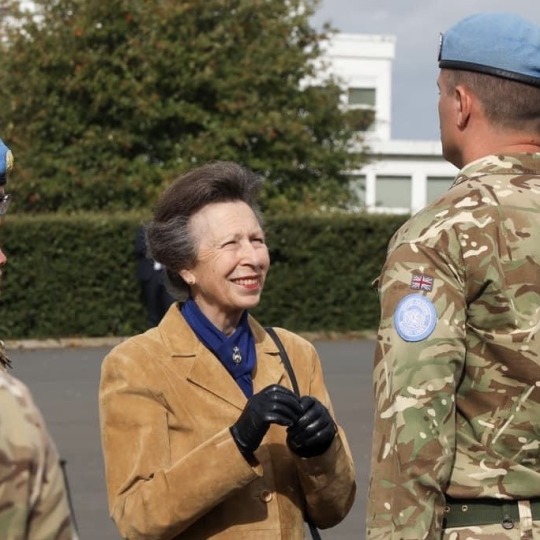

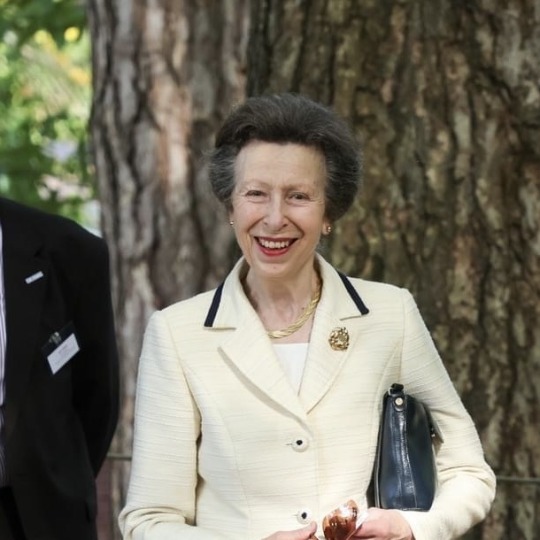




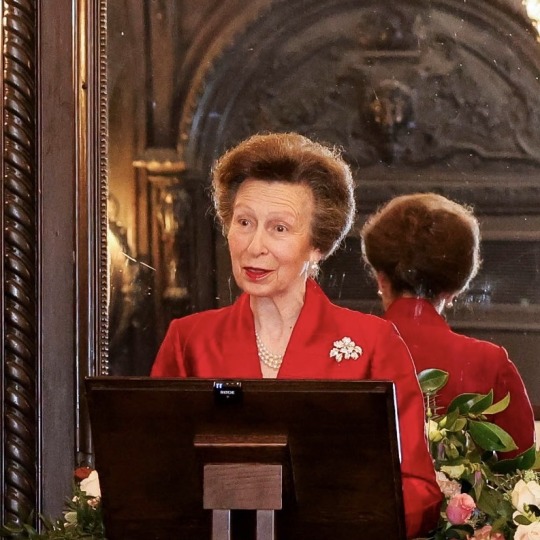
The Princess Royal’s Official Engagements in October 2023
02/10 As President of the Riding for the Disabled Association visited Avon Riding Centre, to mark its 40th Anniversary. 🐴🥳
03/10 Held two Investiture ceremonies at Windsor Castle. 🎖️
With Sir Tim As Patron of the Minchinhampton Centre for the Elderly, visited Horsfall House, Minchinhampton. 👵🏻👴🏻
04/10 In Cornwall Princess Anne visited;
Origin Coffee in Porthleven. ☕️
Camborne School of Mines at the Penryn Campus of University of Exeter, in Penryn. 🔨
St Ewe Free Range Eggs Packing Centre in Truro. 🥚
05/10 As Colonel of The Blues and Royals (Royal Horse Guards and 1st Dragoons), attended a Household Cavalry Medal Parade at Powle Lines, Picton Barracks in Wiltshire. 🫡
07/10 With Sir Tim Attended the Scotland vs Ireland Rugby World Cup match at the Stade de France in Paris. 🏴🇮🇪🇫🇷🏉
09/10 As Patron of Livability, visited Livability Millie College in Poole. 🏫
As Patron of UK Youth, visited Avon Tyrrell Outdoor Activity Centre in Bransgore. 🧗♀️
10/10 Attended a Future of UK Food Systems Seminar held by Crops for the Future at the National Institute of Agricultural Botany in Cambridge. 🚜
As Commandant-in-Chief (Youth) of St. John Ambulance, opened the new Ambulance Hub in Castle Donington. 🚑
11/10 Held two investiture ceremonies at Windsor Castle. 🎖️
Unofficial, Sir Tim attended the opening of the New Zealand Liberation Museum, Te Arawhata, in Le Quesnoy, France. 🇫🇷🇳🇿
As Patron of Scots in London Group attended a Reception at St Columba’s Church of Scotland. 🏴
Attended a Blue Seal Club Dinner at the Cavalry and Guards Club in Piccadilly, London. 🤵♂️
12/10 As Patron of the Campaign for Gordonstoun, chaired a Cabinet Meeting at the Lansdowne Club, London. 🏫
As Patron of English Rural Housing Association, attended a Parish Council Rural Housing Conference at Eversholt Hall, Bedfordshire. 🏡
Visited the Aircraft Research Association in Bedford. ✈️
As Grand Master of the Royal Victorian Order, attended Evensong and a Reception at The King’s Chapel of the Savoy, London. 🎶
14/10 Sir Tim represented Princess Anne, Patron of the Wiltshire Horn Society, at a dinner on the occasion of their centenary. 🐑
15/10 As Member of the International Olympic Committee, and Chairman of the International Olympic Committee Members Election Commission, attended the first day of the 141st International Olympic Committee Session in Mumbai, India. 🇮🇳
16/10 As Member of the International Olympic Committee, and Chairman of the International Olympic Committee Members Election Commission, attended the second day of the 141st International Olympic Committee Session in Mumbai, India. 🇮🇳
Attended an IOC Reception at Jio World Centre. 🌏
17/10 As Member of the International Olympic Committee, and Chairman of the International Olympic Committee Members Election Commission, attended the third day of the 141st International Olympic Committee Session in Mumbai, India. 🇮🇳
Visited the Commonwealth War Graves Commission Bombay 1914-1918 Memorial at the Indian Sailors’ Home, in Mumbai. 🪖
Attended a reception at the residence of His Majesty’s Trade Commissioner for South Asia and Deputy High Commissioner for Western India in Mumbai. 🌏
Unofficial Sir Tim attended a memorial service for Lord Lawson (former Chancellor of the Exchequer) at St. Margaret’s church in Westminster ⛪️
19/10 Hosted a Reception with the King, Queen and the Duchess of Edinburgh at Buckingham Palace to thank those who contributed to and were involved with the State Funeral of The late Queen Elizabeth II and with the Coronation of Their Majesties. 🥂
With Sir Tim, As Colonel-in-Chief of the Royal Army Veterinary Corps attended the launch of the Corps History Book at the National Army Museum in London. 📚
With Sir Tim, As Patron of the Royal Navy and Royal Marines Charity, attended the Trafalgar Night Dinner at the Old Royal Naval College in Greenwich, London. 🤵♀️🤵♂️
20/10 Opened Cutbush and Corrall Charity almshouse accommodation in Maidstone.
Opened the Royal British Legion Industries Centenary Village, Greenwich House, in Aylesford, Kent.
As Patron of the Butler Trust, visited HM Prison Elmley.
24/10 Held an Investiture at Windsor Castle. 🎖️
As President of the English-Speaking Union of the Commonwealth, delivered the Evelyn Wrench Lecture at Dartmouth House in London. 🏴
25/10 In Scotland Princess Anne visited;
The International Society for Optics and Photonics Photonex Exhibition at Scottish Event Campus in Glasgow. 🔍
As President of Victim Support Scotland, visited the National Office-West in Glasgow. 🫂
Peter Equi and Sons Limited Ice Cream Manufacturer. 🍦
26/10 Opened the National Honey Show at Sandown Park Racecourse in Esher, Surrey. 🍯 🐝
As Royal Patron of the Security Institute, this afternoon attended the Annual Conference at the Royal Society of Medicine in London. ⛓️
With Sir Tim As President of the Royal Yachting Association, attended a 50th Anniversary of the Yachtmaster Scheme Dinner at Trinity House, London. 🛥️🍽️
27/10 Held an Investiture at Buckingham Palace. 🎖️
31/10 In Scotland;
As Patron of the Moredun Foundation, attended a Conference at Moredun Research Institute, Pentlands Science Park, in Penicuik. 🧬
As Royal Patron of the Leuchie Forever Fund, attended a Reception to launch Leuchie House’s new strategy in Edinburgh. 🏡
As Chancellor of the University of Edinburgh, held a Chancellor’s Dinner at the Palace of Holyroodhouse. 👩🎓
Total official engagements for Anne in October: 47
2023 total so far: 400
Total official engagements accompanied by Tim in October: 6
2023 total so far: 81
#a busy bee#princess anne#princess royal#tim laurence#timothy laurence#unofficial engagement count 2023#october 2023
58 notes
·
View notes
Text
The UNRWA-Hamas Linkage
Since Hamas' savage attack against Israel on October 7th 2023, the IDF has been operating in Gaza to eliminate Hamas' military and governance capabilities and free the Israeli hostages. During this operation, a wealth of new intelligence has been gathered on Hamas, Palestinian Islamic Jihad (PIJ) and other terror organizations. Israeli forces have retrieved millions of documents in captured enemy material. This new intelligence exposed two related issues: first, the involvement of United Nations Relief and Works Agency (UNRWA) employees in the October 7th massacre. Second, the deep and systemic infiltration by those terror organizations, particularly Hamas, into the ranks of UNRWA.
What are the new findings on UNRWA in Gaza?
The collection and analysis of the new information is still ongoing, yet it is already clear that a significant share of UNRWA's employees in Gaza serve in the ranks of Hamas and other terror organizations, including in military positions.
Israel has sent UNRWA an official letter with a list of 100 terror operatives employed by the agency with their names, ID and military ID numbers.
__
Over 10% of senior UNRWA educators in Gaza (school principals or deputy principals, directors or deputy directors of training centers) were found to be members of Hamas or Islamic Jihad (click here for details).
__
Over thirty UNRWA facilities in Gaza have been found to contain terror infrastructures such as tunnel shafts, reflecting a deeply concerning, and possibly systematic, abuse of the status of these facilities for terrorist purposes. Hamas operated a high-end server farm directly under UNRWA's Gaza headquarters, with communication and electricity cables connecting both compounds.
Intelligence shows that Hamas considers UNRWA an essential asset both for maintaining its rule over Gaza and for exploiting its facilities to build terror infrastructure. It is not a case of "a few rotten apples", as some have tried to portray it.
Multiple times in the past, Israel provided UNRWA with information on members of Hamas that are employed by the agency, yet no action was taken.
What did Israel do with the information?
In January, as the full details were still being gathered, Israel discretely shared the initial details with UNRWA's High Commissioner, Phillipe Lazzarini. This included the names of twelve UNRWA employees, who had been identified at the time as having participated in the October 7th massacre.
Subsequently, the UN Secretary General ordered an investigation by the UN's Office of Internal Oversight Services (OIOS) strictly on the involvement of those twelve employees in the October 7th massacre. In addition, the Secretary General appointed an external Review Group to examine UNRWA's neutrality mechanisms, chaired by Former French Foreign Minister, Catherine Colonna. In early March, both bodies visited Israel where they received detailed briefings and information, including raw intelligence, exposing the full depth and breadth of the terror infiltration into UNRWA.
In parallel, the information was shared with Israel's intelligence partners and was presented to the relevant officials in UNRWA's donor countries.
The often-repeated claim that Israel did not share information on the UNRWA-Hamas nexus is entirely false.
UNRWA in Gaza is beyond repair
As the new revelations on UNRWA were being gathered, and following a thorough inter-agency assessment, Israel concluded that the terror infiltration into UNRWA's Gaza operations poses a grave security risk and seriously jeopardizes the humanitarian efforts. Furthermore, it was concluded that the problem cannot be fixed by reforms or the introduction of new "neutrality mechanisms" in UNRWA, for two key reasons:
First, contrary to most of the donor governments, UNRWA – like the UN itself – does not regard Hamas as a terrorist organization. As recently as February 2024, UN Under-Secretary-General for Humanitarian Affairs Martin Griffiths publicly stated that “Hamas is not a terrorist group for us, as you know, it is a political movement." Moreover, reforms will not change the basic fact that UNRWA in Gaza is the only UN entity in the world which runs a state-like enterprise employing 13,000 local staff members, managed by a small number of international staff, in an area controlled by a terrorist organization with a genocidal agenda (the Hamas Charter openly states that: “Israel will exist and will continue to exist until Islam will obliterate it, just as it obliterated others before it"). UNRWA has yet to show any inclination to investigate the affiliation of over 2000 of its staff in Hamas and other terrorist organizations, nor to dismiss them. It also has not declared whether it considers employing Hamas militants as a breach of its neutrality.
Secondly, over the past decade UNRWA announced various reforms and new "mechanisms" ostensibly aimed at ensuring its neutrality to address public scandals and concerns by donors. However, an analysis of those measures shows that they were ineffectual and never fully implemented. This reflects either a lack of will or a lack of ability to apply steps which effectively prevent terror infiltration. For example, UNRWA boasts of conducting quarterly "neutrality inspection" of its facilities, yet those checks, conducted by local staff (who may or may not be Hamas members), according to UNRWA's own website, look only for political slogans in posters and graffiti, not for any evidence of abuse by terrorist organizations:
"Installation inspections include checks for: (i) proper use and placement of signage, including: flags, UN sign/logo, no weapons sign; (ii) ensuring that the building is free of political slogans, flags, posters and other markings; (iii) a short questionnaire for the installation manager on any experiences related to incursions, unauthorized activity and harassment of staff..."
A ’neutrality breach’ according to UNRWA’s definition is "taking sides in hostilities or engaging in controversies of a political, racial, religious, or ideological nature." Infiltration by a terror organization that then exploits UNRWA facilities to further their terror organization’s objectives goes far beyond a mere neutrality breach. It undermines all other humanitarian principles, including humanity, impartiality and independence. UNRWA's attempt to frame the issue as merely one concerning neutrality is misleading and points to ineffective solutions. Preventing terror infiltration of such massive enterprises requires tools that UN agencies in the field do not have, starting with the ability to define local terrorist organizations as such.
UNRWA can be replaced in Gaza gradually without hampering the humanitarian effort
After the exposure of the extent of terrorist infiltration of UNRWA, Israel’s humanitarian policy has been to shift focus to working with responsible aid organizations that aren’t compromised by terrorist organizations. The priority has been to do so without hampering the goal of increasing and improving the humanitarian assistance provided to the civilian population in Gaza. This policy was devised and approved after a thorough assessment of UNRWA's role in the humanitarian effort and its functioning since October 7th. The assessment concluded as follows:
UNRWA has underperformed logistically on the ground since October 7th, including inter alia by failing to scale up its operations in a timely fashion while simultaneously trying to take lead in multiple operational areas in which it did not have deep expertise. UNRWA has attempted to create a monopoly on the distribution of aid in Gaza at the expense of other humanitarian agencies, and the cluster system that the UN applies in all other humanitarian missions worldwide. Instead of adopting a professional, solutions-oriented approach, UNRWA's top leadership prioritized their political and media campaign against Israel which included countless baseless accusations and disinformation.
UNRWA's functions in Gaza can be gradually transferred to more professional providers. For example, for a period of six weeks in February and March 2024 UNRWA didn’t make a single request to take aid to the north of Gaza where it was needed most. Instead, the food relief was brought by other actors such as the private sector, other UN agencies and international NGOs. Since the start of the war, UNRWA was responsible for bringing in 15% of the aid, compared to 27% by the Egyptian Red Crescent and 20% by the World Food Program (WFP). There are many other responsible humanitarian actors, including other UN organizations and over 43 NGOs currently operating in Gaza, who can take a larger role in aid distribution.
In the longer run, UNRWA's state-like function as a provider of basic services, such as education, health and garbage collection, could and should be transferred to local civilian authorities in post-Hamas Gaza.
Hamas, a designated terrorist organization, has repeatedly demonstrated that it prioritizes terror over the wellbeing of Gazan civilians. It exploits them as human shields and views a humanitarian crisis as an integral part of their war strategy. The effectiveness of the humanitarian efforts in Gaza, and the safety of the people involved in it, requires their complete delinking from Hamas. Unfortunately, the UN’s and UNRWA’s leadership have chosen to understate the severity of this unprecedented scandal, leading to what might go down as one of the biggest whitewashes in the history of the United Nations.
Pursuant to these assessments, Israel is effecting a graduated replacement of UNRWA in Gaza, without hampering the humanitarian effort.
Both UN review processes cannot offer a path to safely resume funding to UNRWA in Gaza.
The two reviews have very strict and limited terms of reference (TORs). The OIOS has been mandated to investigate only the involvement of the initial twelve UNRWA employees whose names were provided in January. The Review Group chaired by Ms. Colonna has been explicitly instructed by the TOR given to it by the Secretary General not to investigate any allegations of breaches of neutrality by UNRWA "nor make any findings of fact in respect of them." Its mandate is limited to examining UNRWA's internal mechanisms to preserve its neutrality. Furthermore, it does not intend to examine whether UNRWA's reports and public communications abide by the principles of neutrality and impartiality.
To summarize, both review processes lack the mandate and the expertise to provide donors with answers to the following questions:
Has UNRWA been deeply infiltrated by designated terrorist organizations?
Is UNRWA's exposure to terror infiltration in Gaza beyond repair?
Can UNRWA be replaced in Gaza without hampering the humanitarian effort?
Israel's assessment has resulted in affirmative answers to all three questions.
It is therefore up to governments, parliaments and the public in donor countries to make their own assessments and answer those questions before the flow of tax-payers' money to UNRWA, and through it to Hamas, continues.
Israel is willing to engage and provide all the information that can help such a process.
15 notes
·
View notes